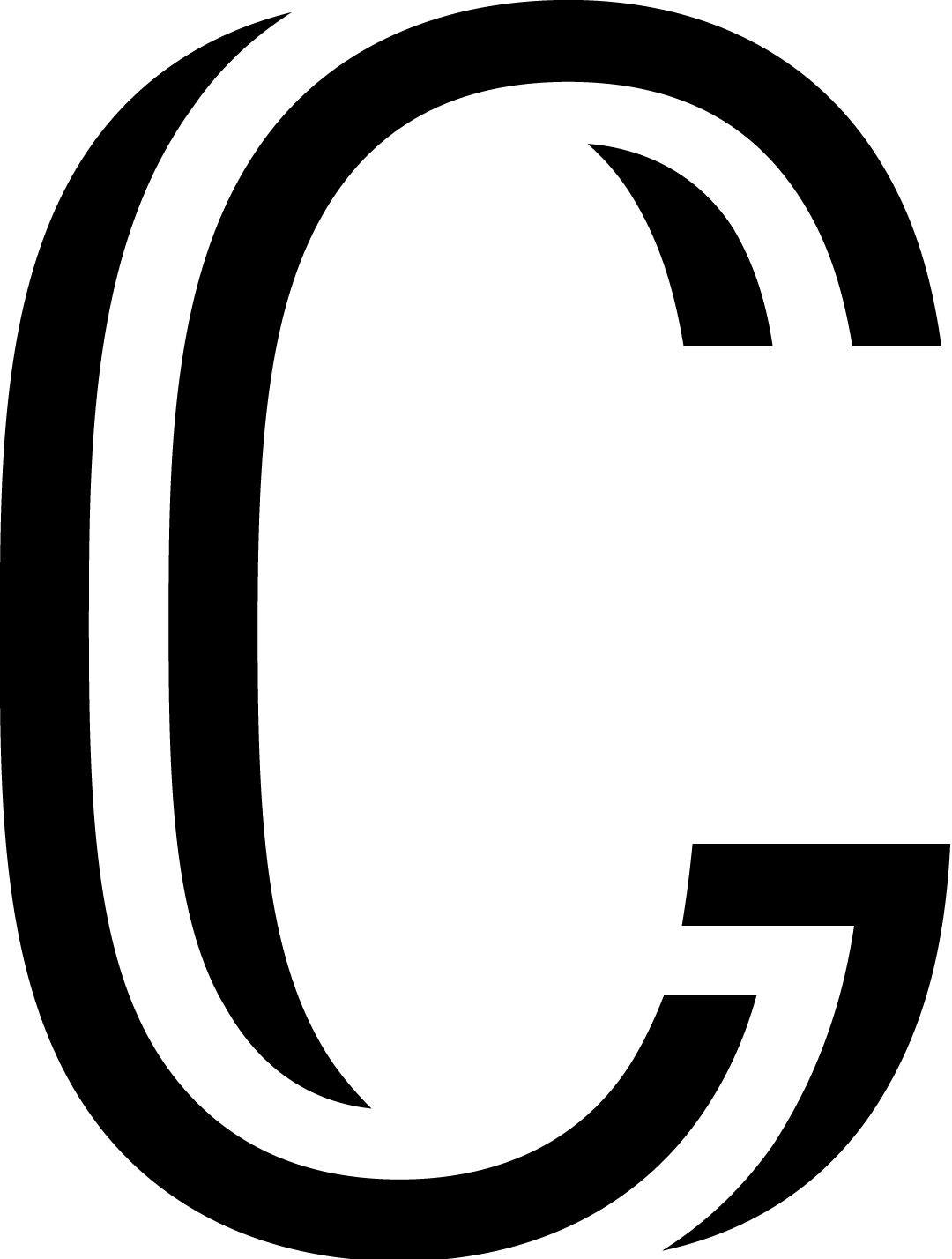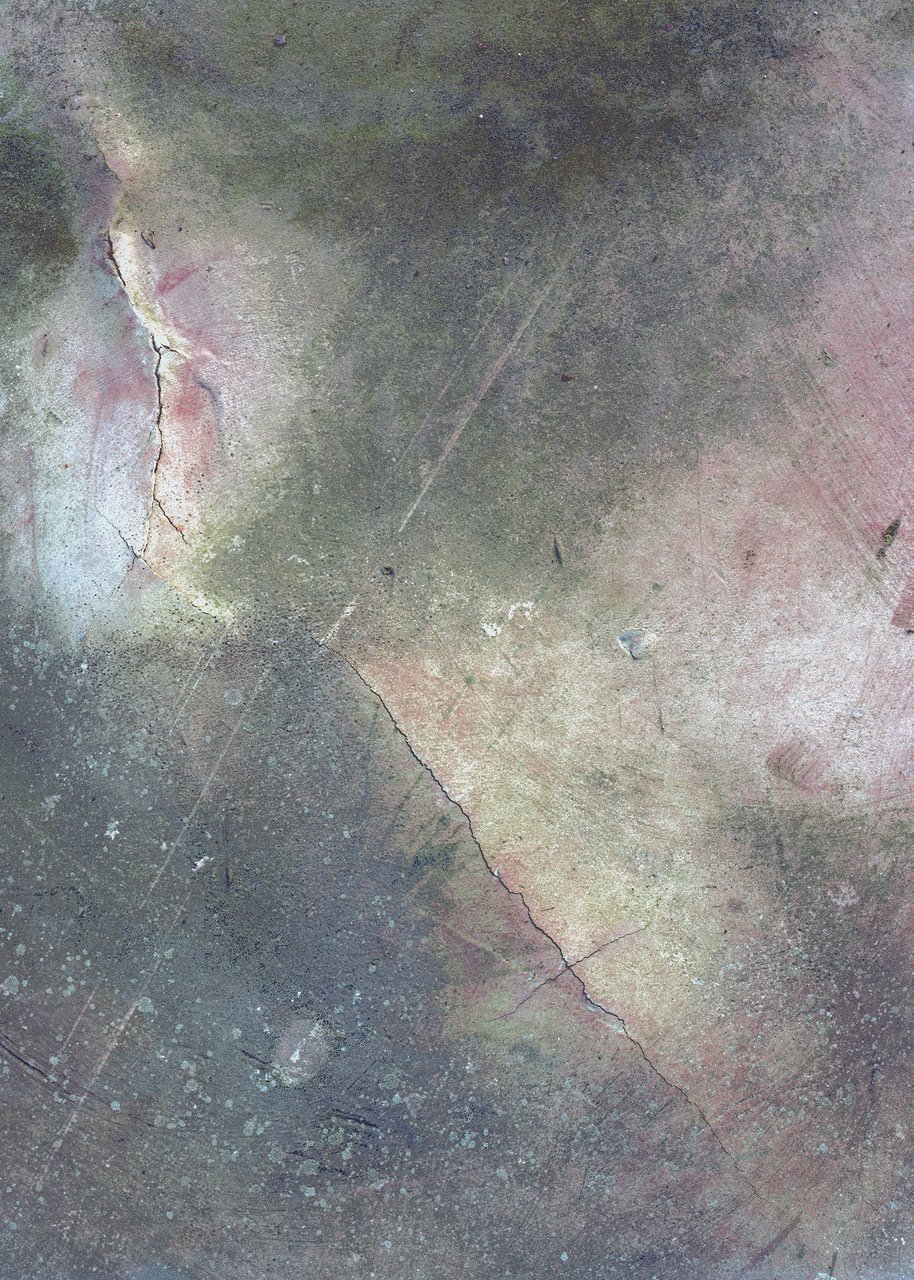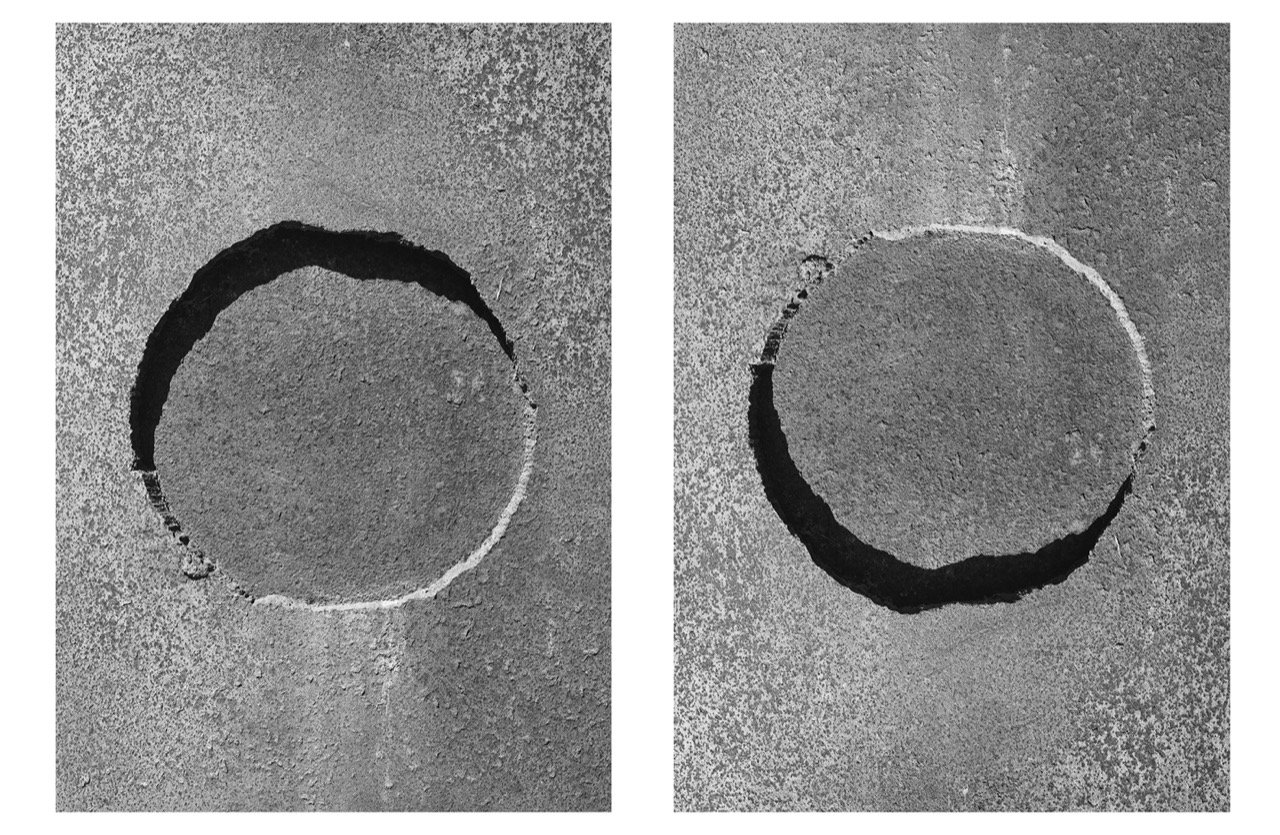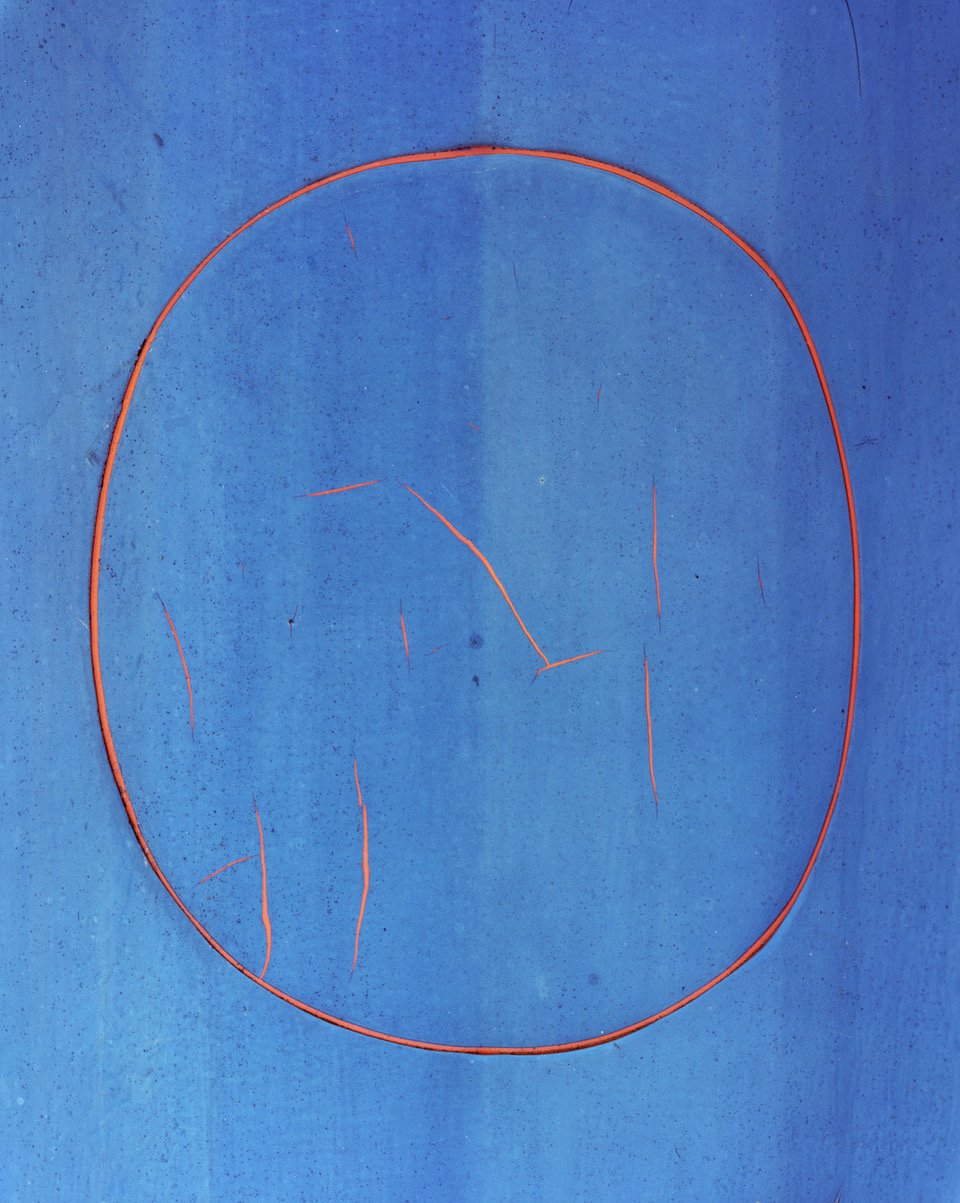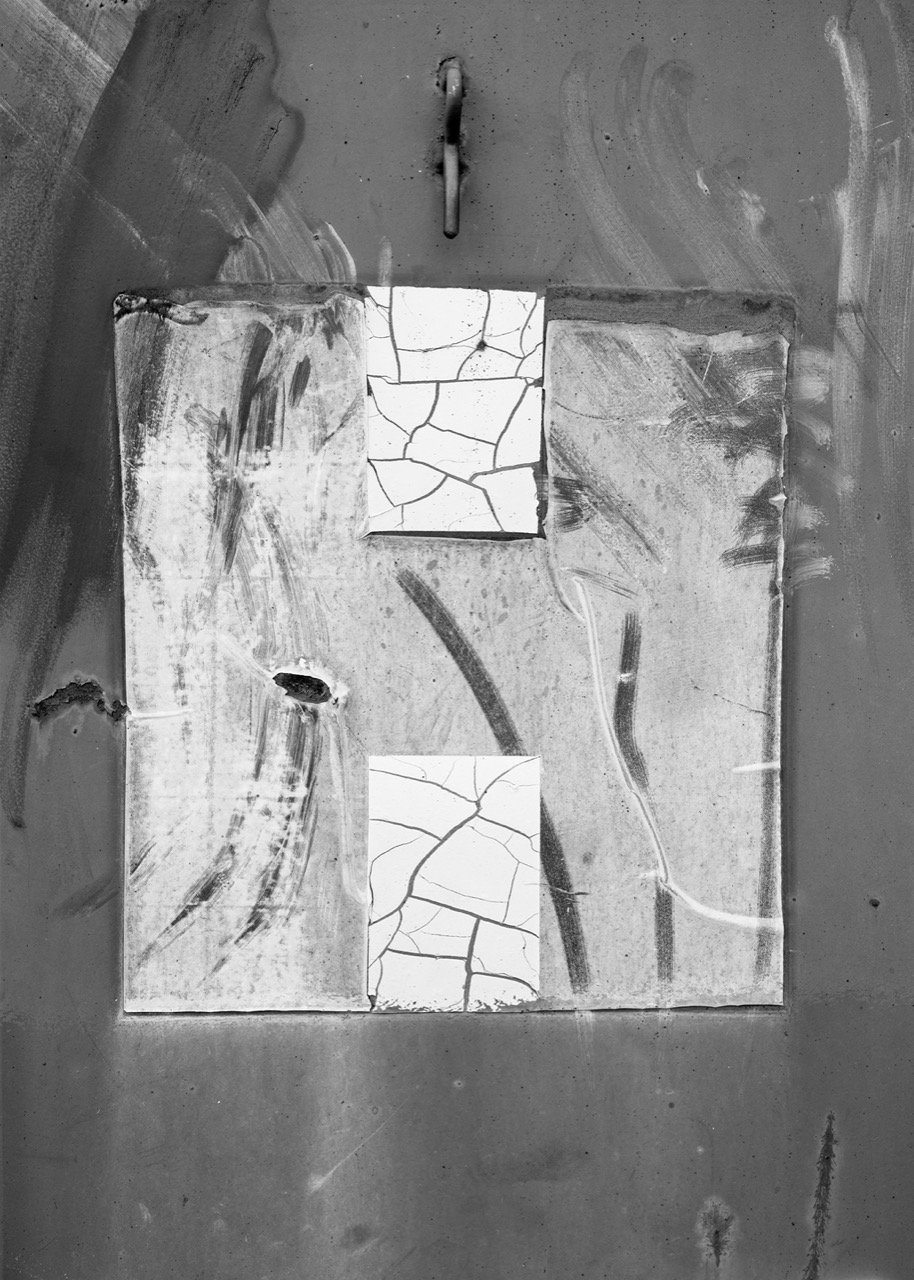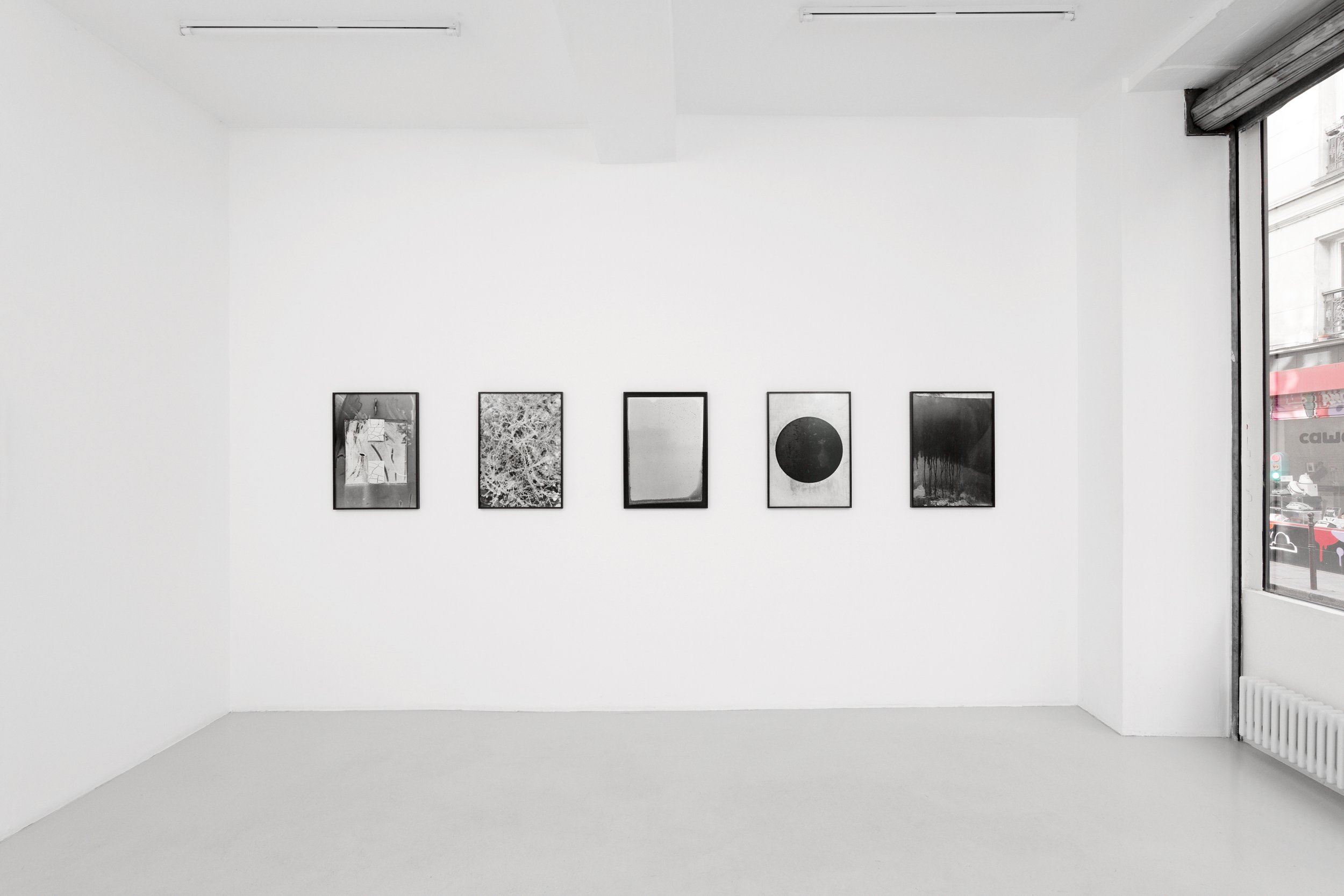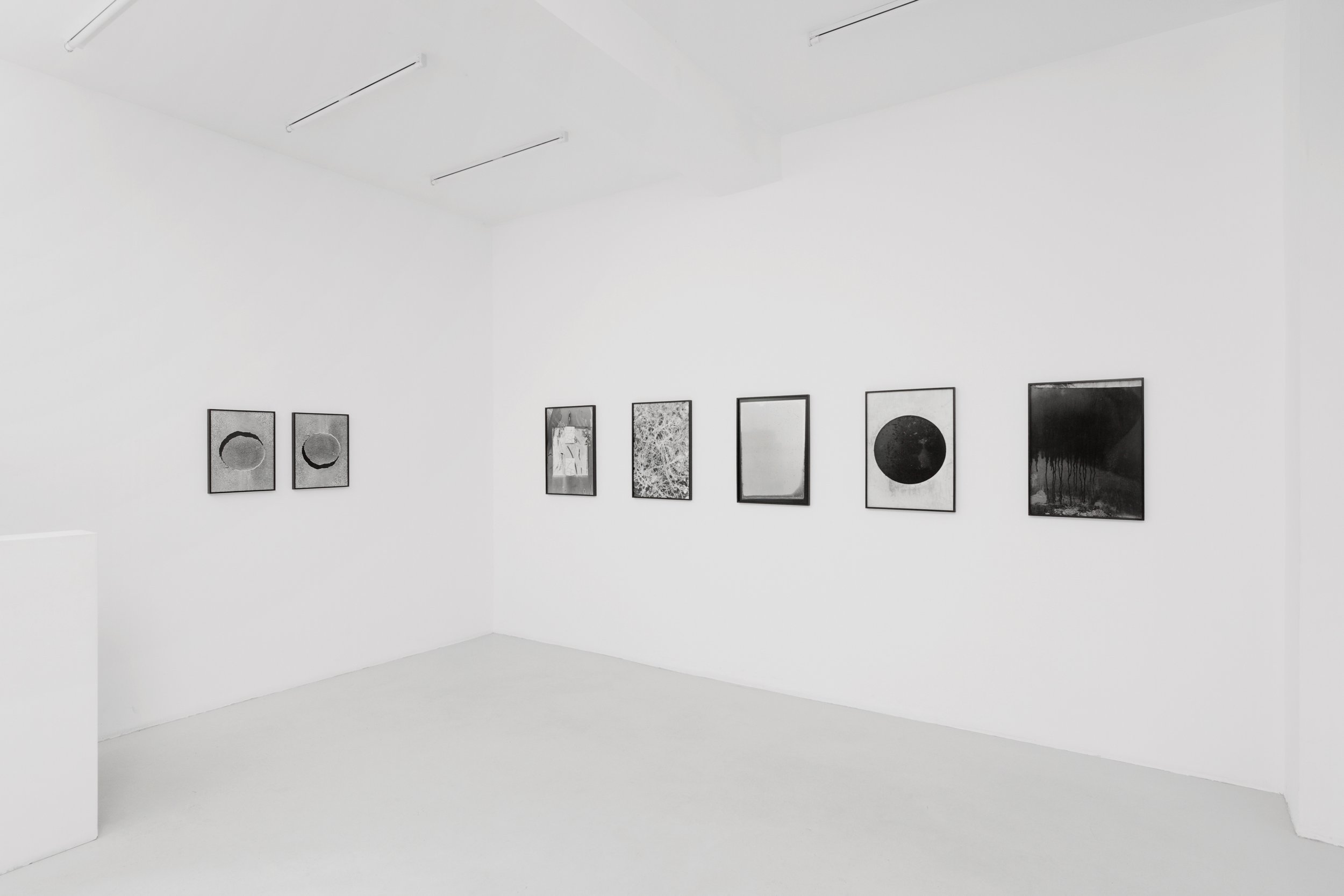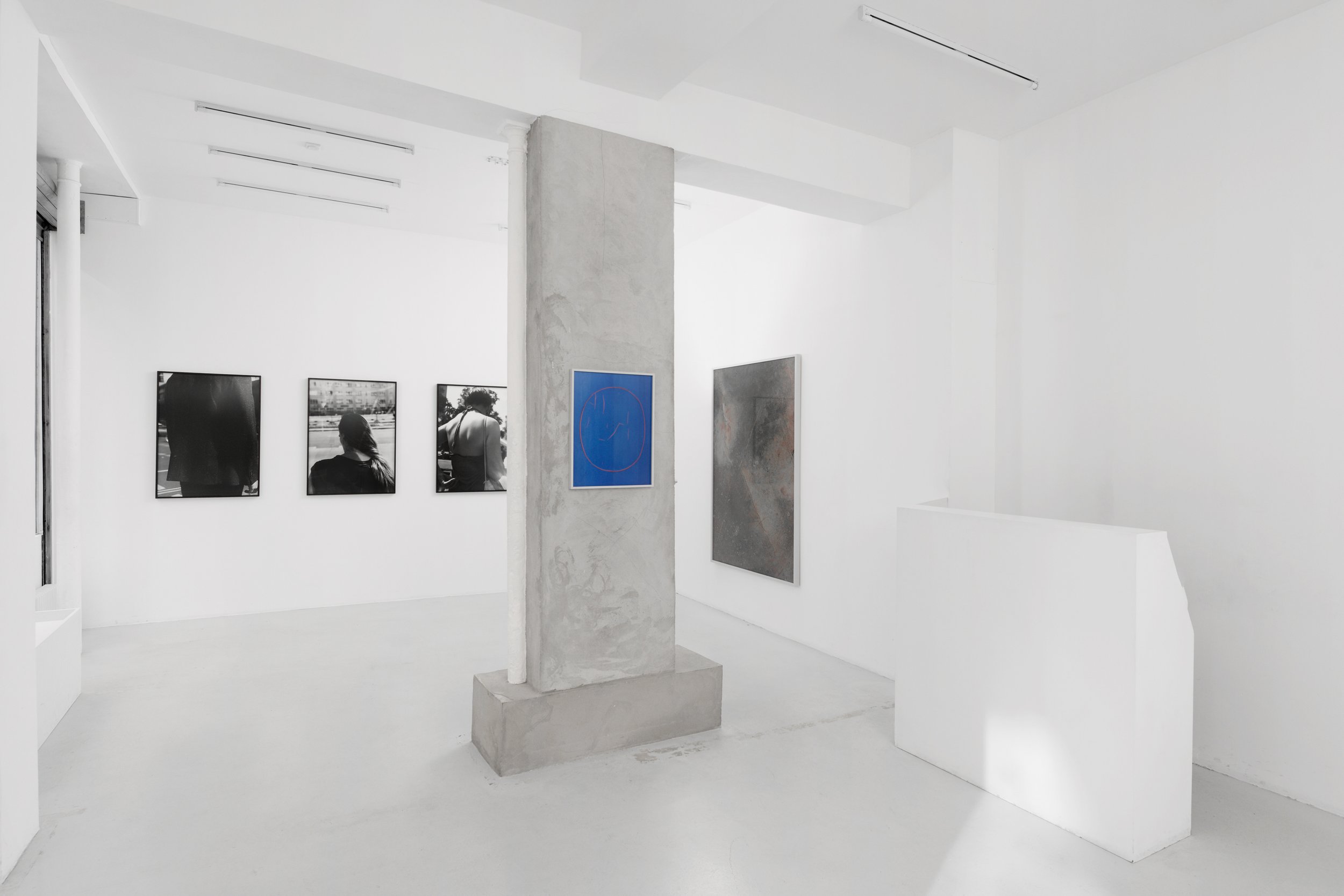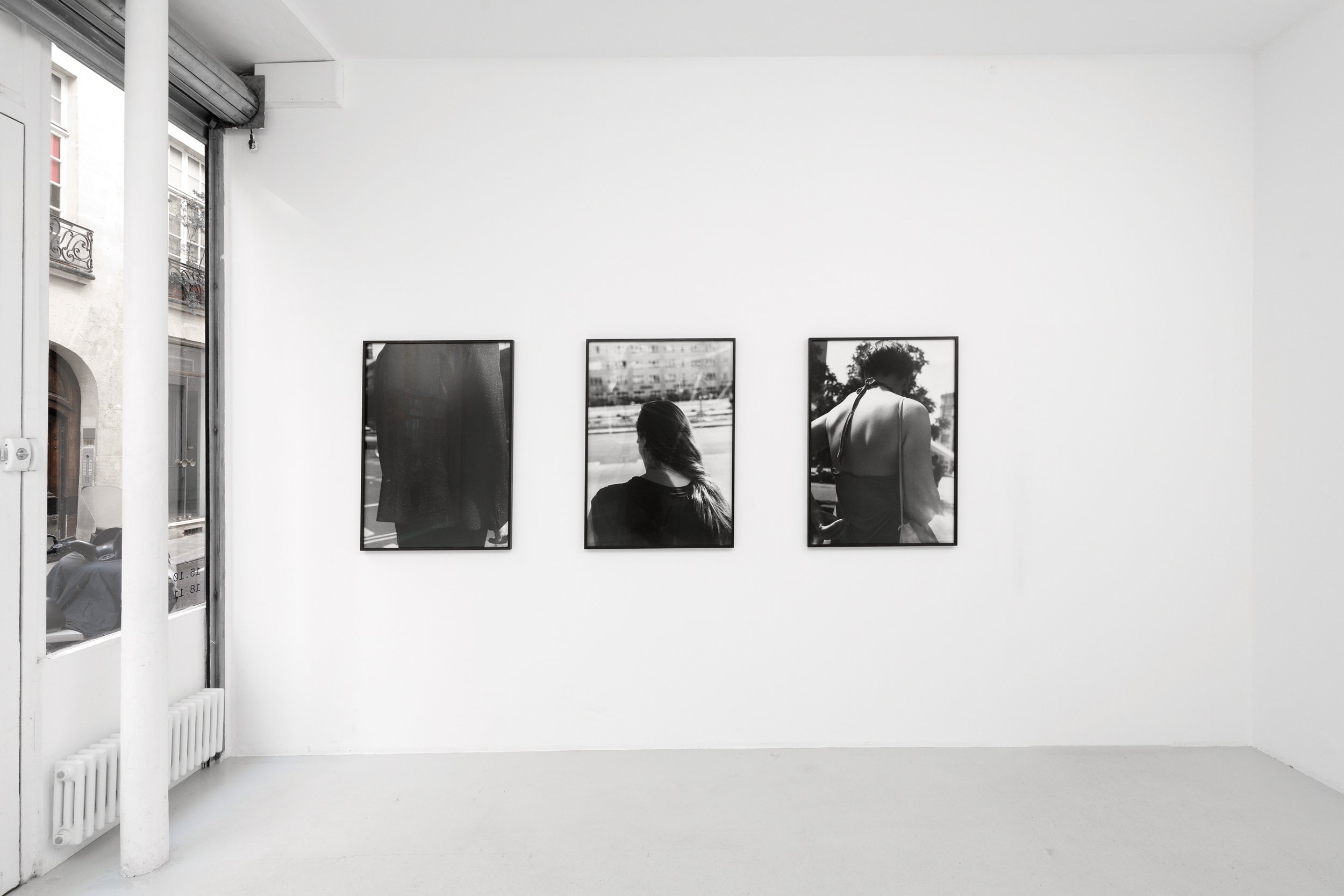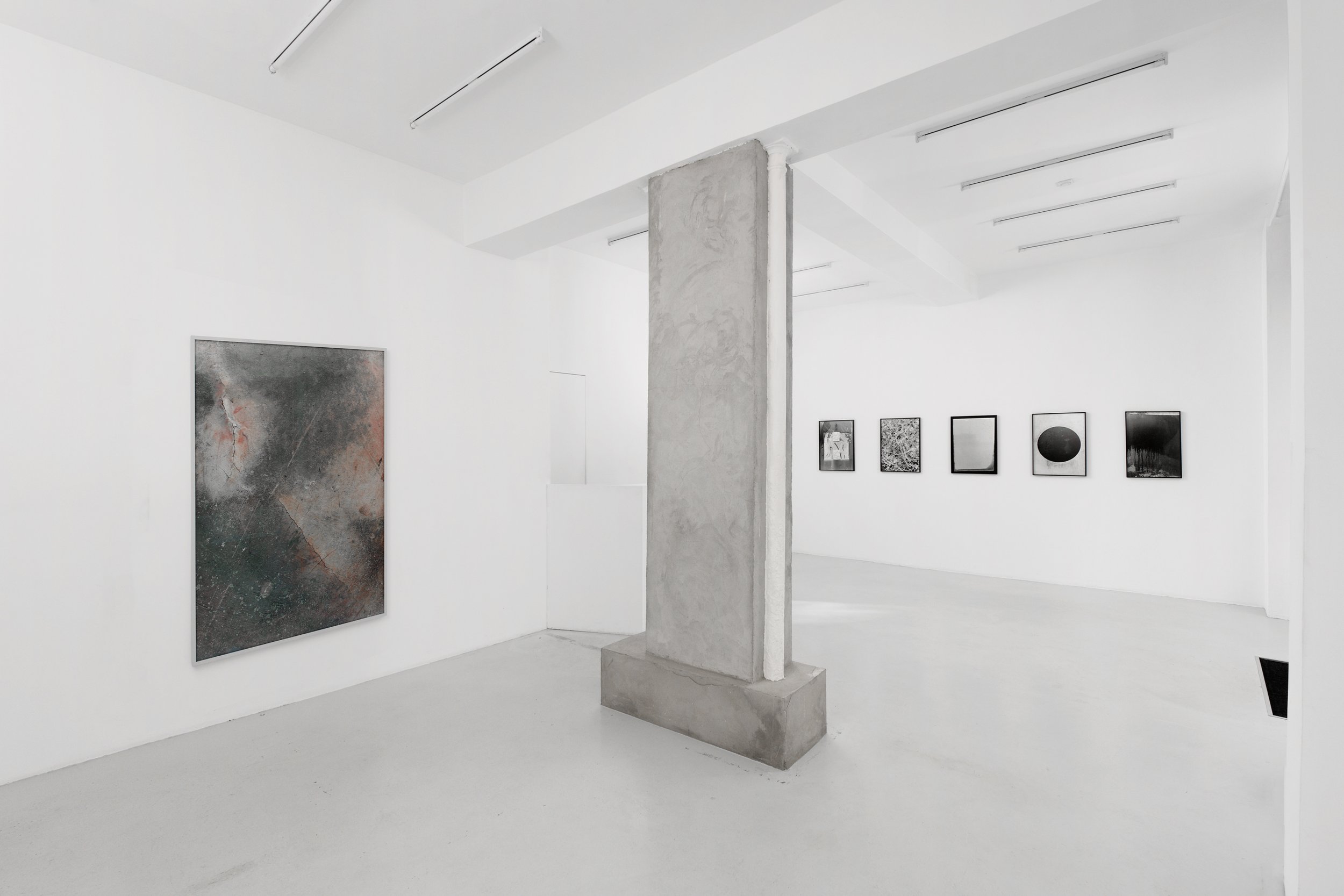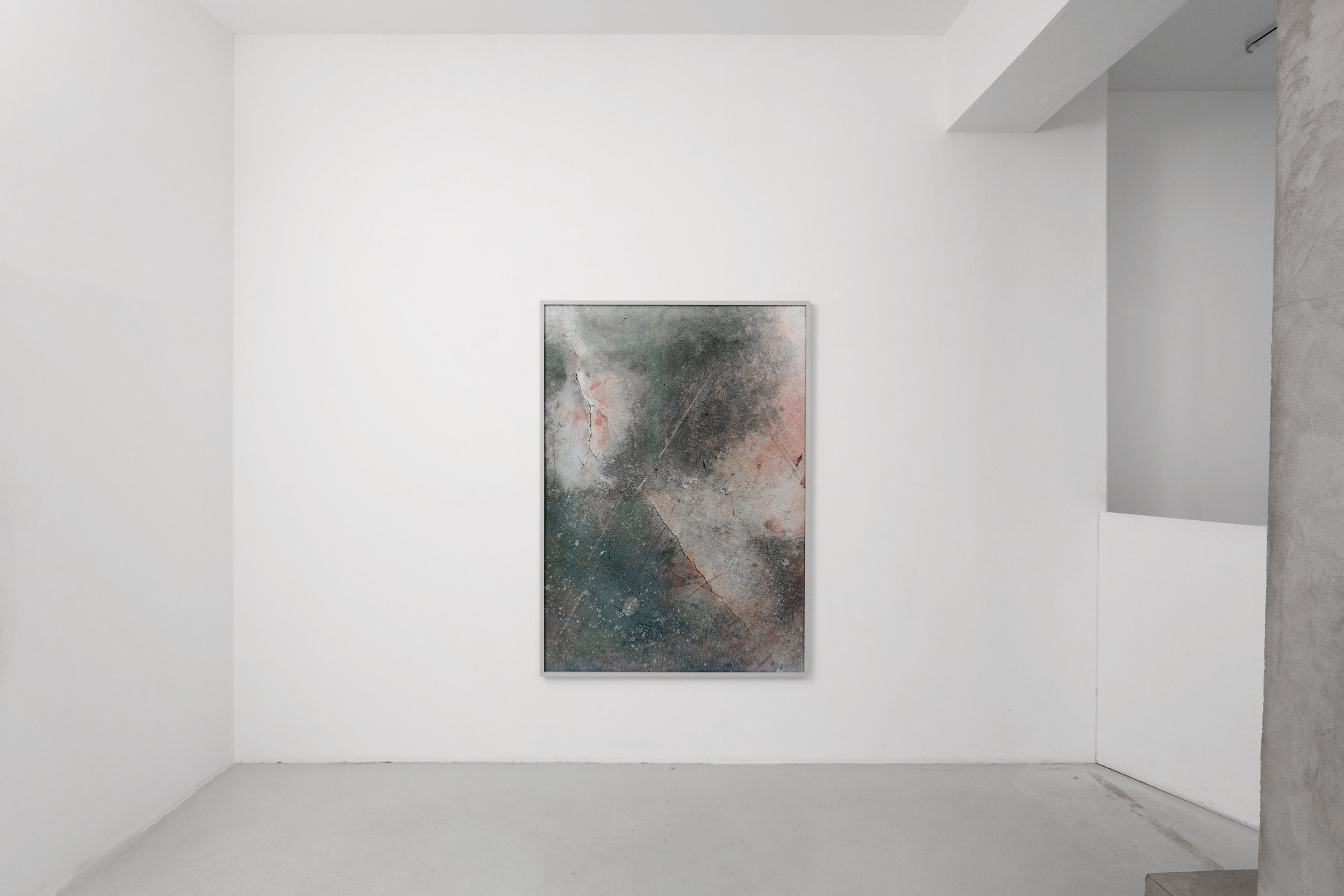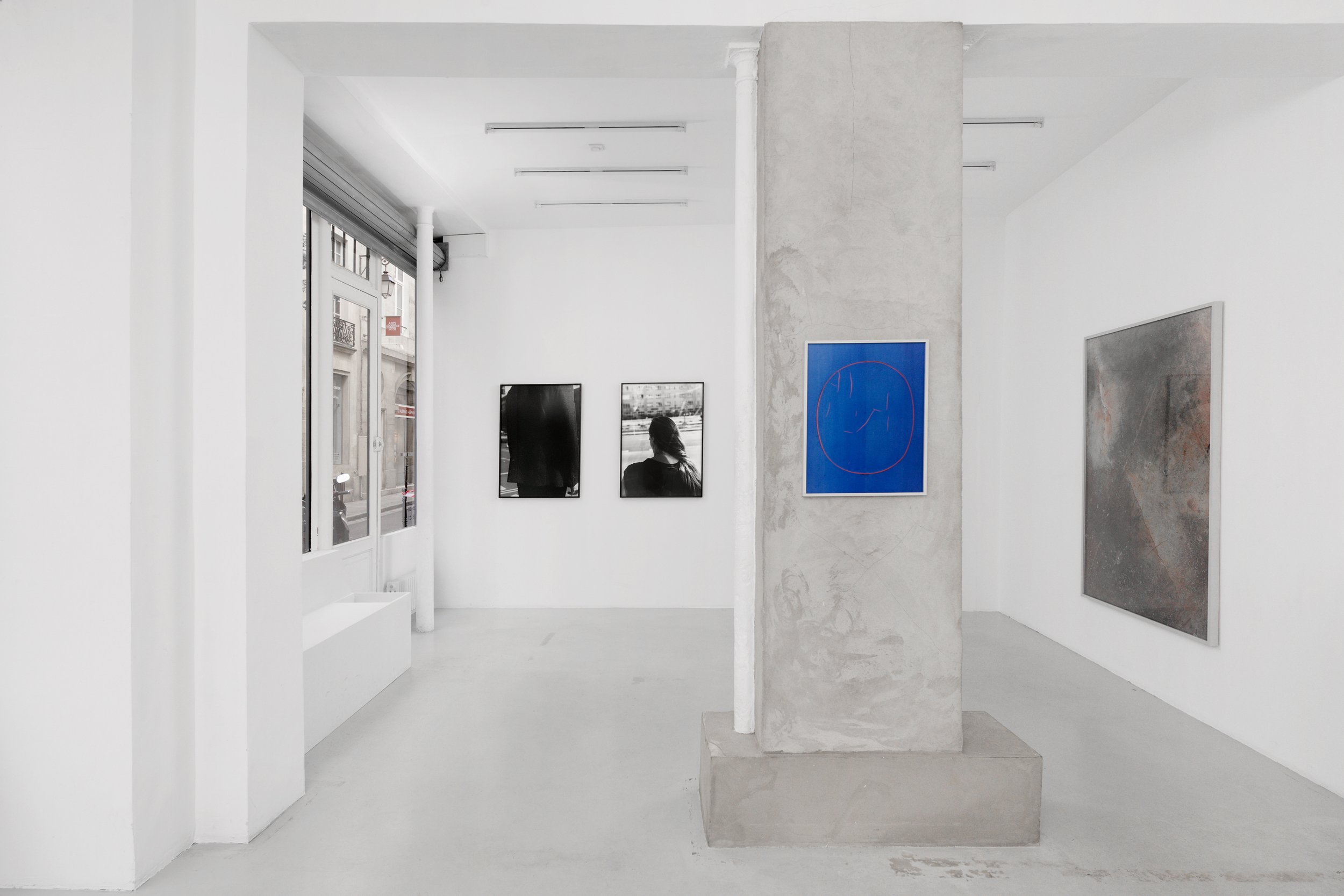“Lukas Hoffmann”
….
« Qui, de nos jours, regarde la lumière traverser les cloisons de sa « chambre noire » en compagnie d’un assistant fantasmagorique, se frappe les yeux pour reproduire les sensations des couleurs perdues, ou reste éveillé la nuit pour regarder des ombres colorées dériver des murs ? J’ai déjà fait tout cela, alors que je n’étais au service ni de la science ni de la philosophie, ni même de la poésie. »
Maggie Nelson, Bleuets
Se plonger dans les photographies de Lukas Hoffmann est comme sonder l’histoire de la peinture : les œuvres présentées au sein de « Target » regorgent, en effet, de références aux compositions d’un Clyfford Stil et de liens avec les lignes de force d’un Franz Kline. Elles rappellent la radicalité d’une Helen Frankenthaler et le pouvoir évocateur des formes qu’on décèle dans ses œuvres. Et pour cause, la photographie, telle que Lukas Hoffmann la comprend et la déploie, n’est pas seulement une ouverture sur le monde, elle est un pont vers le motif. Au travers de son objectif, la réalité d’un espace, d’un objet, de sa texture ou de sa nature matérielle s’additionne à leur propre force symbolique. Le titre de l’exposition lui-même n’est, bien sûr, pas sans rappeler les tableaux-cibles (Target) de Jasper Johns qui, avec ses peintures à l’encaustique investissait la matière sans pour autant tomber dans une abstraction totale.
Objets ou sujets ? Les œuvres de Jasper Johns font indéniablement le lien entre l’art et la vie en représentant des motifs connus de tou.te.s pour nous permettre de voir au-delà. C’est dans cet interstice, aussi, que se situe la poésie des œuvres de Lukas Hoffmann : il investigue le réel. Il fige un espace, des traces, des éclats sur les murs, des friches, des signes du passage du temps et des activités exercées sur les lieux où il déambule. Sa photographie créée des moments de basculement du regard et forcent nos yeux à se repositionner sans cesse. Plus qu’il ne représente, le travail de Lukas Hoffmann évoque. Si le titre de EEW Heringen (Boden) fait allusion au sol de l’endroit où le cliché a été pris, nous pouvons y voir un morceau de peau : est-ce un épiderme strié de cicatrices ? Charnelle, une telle perception du motif provoque un énième retournement et nous ramène à son lieu originel. Ce sol et ses stigmates -tout comme les corps des personnes qui l’ont foulé -ne dit-il pas beaucoup de ses activités passées ? Ce double renversement opère dans beaucoup de photographies de Lukas Hoffmann. Ainsi, dans Container, la ligne ourlée et circulaire donne des impressions de trace millénaire mais la régularité de cet écaillement suggère en même temps, une graphie mécanique bien plus contemporaine. Instauré comme un système, ce double basculement apparait également dans les images de végétaux prises par l’artiste : les bourgeons, tiges et épines des plantes de friches sont autant d’étincelles d’un soudeur.
Véritables lentilles sur le réel, les œuvres de Lukas Hoffmann sondent aussi l’être humain. Dans ses Strassenbilder berlinois -célèbre série de l’artiste où il photographie à la volée et à la chambre des passants -il ne capture que des bribes de corps, des détails de vêtements ou des morceaux d’ombres et bouscule ainsi la représentation des individus. L’air provoqué par une passante qui nous frôle, la mèche de cheveux qui étincelle au soleil, les muscles veineux d’un mollet en marche, les lignes et motifs d’un vêtement sont autant de détails qui nous en disent plus, ici, sur l’émotion d’un instant, l’interconnexion et l’attention que nous portons aux autres que ne le ferait un portrait frontal. Dans leur silence habité, les œuvres de Lukas Hoffmann disent beaucoup, nous laissent voir beaucoup et leurs formes survivent dans ce hiatus entre l’art et la vie.
Vernissage le Dimanche 15 octobre 2023 de 14h00 à 18h00
À l’occasion du Starting Sunday organisé par le CPGA pour la semaine de l’art.
Télécharger le dossier d’exposition : ici
Plus d’information sur le “Starting Sunday” : ici
..
“ Who, these days, watches the light pass through the the walls of his "darkroom" in the company of a phantasmagorical assistant, hits his eyes to reproduce the sensations of lost colors, or lies awake at night to watch colored shadows off the walls ? I've done all that, when I was in the service of neither science or philosophy, even poetry."
Maggie Nelson, Bleuets
Immersing oneself in the photographies of Lukas Hoffmann is like probing into history of painting: the works presented in « Target », in fact, they are brimming with references to the compositions of Clyfford Stil and links to the force lines of Franz Kline. They recall the radicalism of Helen Frankenthaler and the evocative power of form in her work. And with good reason, the photography as Lukas Hoffmann understands and deploys it, is not only an opening onto the world, it's a bridge to the motif. Through his lens, the reality of a space, an object, its texture or the material's nature is added to their own symbolic force. The title of the exhibition itself is, of course, reminiscent of the target-paintings ( Target) by Jasper Johns, with his encaustic paintings, invested matter without falling into total abstraction.
Objects or subjects ? Jasper Johns’s work are undeniably making the connection between art and life by depicting designs known by everyone to allow us to see beyond. Also in the gab which lies between the poetry in the works of Lukas Hoffmann : he investigates reality. He freezes the space, traces, splinters on the walls, wasteland, signs of the passage of time and activities carried out in places where he wanders.
His photographs creates moment of tilting the gaze, foring our eyes to constantly reposition themselves. More than it represents, Lukas Hoffmann’s work evokes. If the title EEW Heringen (Boden) refers of the ground in the place where the photo was taken, we can see a piece of skin : is it an epidermis streaked with scars? Such a carnal perception of the motif provokes the umpteenth reversal, taking us back to its original place. This ground and his stigmata - like the bodies of the people who have walked on it - doesn’t say of his past activities ? This double reversal operates in many of Lukas Hoffmann's photographs. In Container, the hemmed and cirular line gives the impression of a thousand year old trace but the regularity of this scaling suggests, at the same time, a much more contemporry graphic. Established as a system, this double tilt is also apparent in the artist's images of plants: the buds, stems and thorns of wasteland plants are the sparks of a welder.
A true lens on reality, Lukas Hoffmann’s works probes the human being. In his berliners Strassenbilder - artist’s famous series in which he takes photographs of passers-by using a darkroom - he only captures body fragments, garment details or pieces of shadows and manages to transform the representation of individuals. The air caused by a passer-by brushing against us, the lock of hair that sparkles in the sun, the veiny muscles of a walking calf, the lines and patterns of a garment - these are all details that tell us more about the emotion of a moment, the interconnection and the attention we pay to others, than a frontal portrait ever could. In their inhabited silence, Lukas Hoffmann's works say much, let us see much, and their forms survive in this hiatus between art and life.
Opening : Sunday 15 October 2023, from 2pm to 6pm
On the occasion of Starting Sunday, organized by the CPGA during the Parisian Art Week.
Download the press release: soon
….
